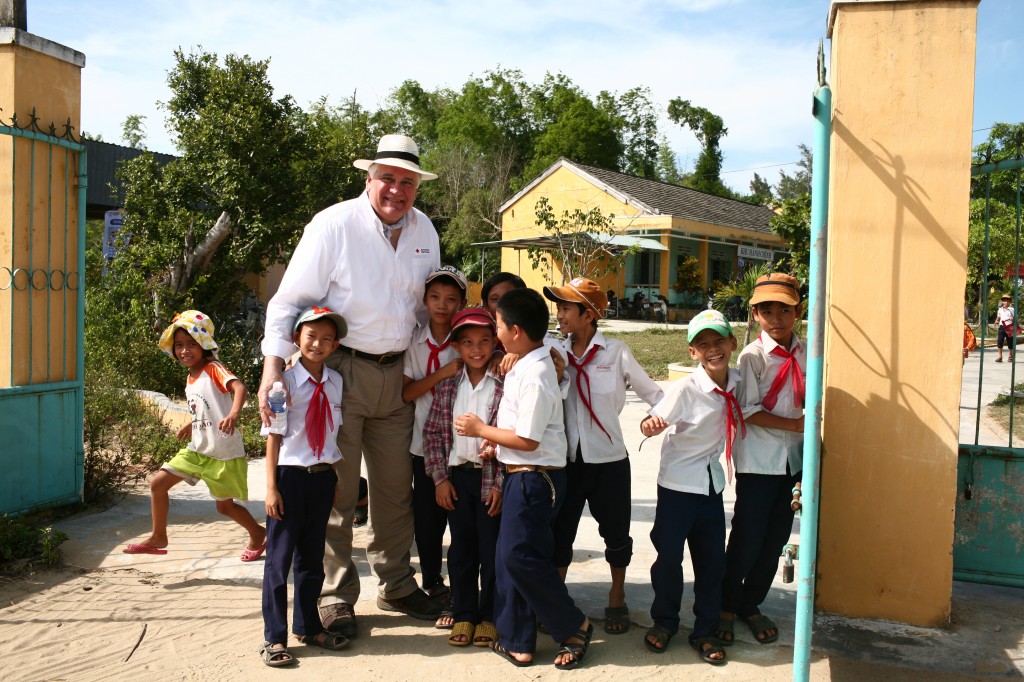by Jerry DeFrancisco
As the president of Humanitarian Services for the American Red Cross, you could say I’ve done my share of traveling. After all, there are few communities around the world that aren’t touched by the work of the Red Cross, and being responsible for the oversight of our operations both domestically and globally mean a good amount of my time is spent on the road.
The one place I had not visited was Vietnam. I, like many people of my generation, had served in the war, but from an Army base in Texas. When a Services to the Armed Forces meeting in Japan found me a mere 5.5 hour flight from Hanoi, I took the opportunity to go. Vietnam has some really amazing community disaster preparedness programming and I knew, particularly after the destruction of Sandy, it would benefit me to see how the Vietnam Red Cross approaches preparedness.
Vietnam is a country that is constantly being barraged by one disaster or another; an average of 160 natural disasters occur here a year. I was particularly interested in seeing their PEER CADRE program, a long worded acronym (Program for Enhancement of Emergency Response (PEER) Community Action for Disaster Response (CADRE)) that takes a comprehensive approach to preparedness. In layman’s terms, it is a program with the underlying principle that practice by the whole community means better preparedness.
Practice to the community means drills, training and school education. I was pleasantly surprised at how seriously residents took the program. I come from the “hide under the desk generation,” where emergency drills meant loud and random alarms and students scrambling and giggling under their chairs. But in these communities, emergency drills meant collapsed buildings, flooding, water rescue—all very realistically simulated—followed by in depth after-action review by the community teams. What did we do wrong? What needs to be done faster? It really struck me how much the community was into it, the school kids, the police, the government and the Vietnamese Red Cross. For these communities, these practice drills really mean life or death.
Experiencing these drills firsthand renewed my pride in the work we do as the American Red Cross. What we did was what the Red Cross does best. We are conveners of communities, taking our expertise and experience and sharing it in a way that brings people together—whether that be training emergency drill instructors or showing teachers new ways to incorporate disaster preparedness skills in the classroom. In short, we see preparedness as a community issue, not just a Red Cross issue and there is no reason we can’t see the same results in our community especially in disaster-prone areas.
The work we do around the world is critical. But this is the true Red Cross—communities, neighbors, volunteers—leading the way to a safer and more resilient tomorrow.

